Upcycling of Pre-consumer Textiles Waste
Textile industry is among the most essential consumer goods industry. However, textile industry is accused of being one of the most polluting industries. Not only production but consumption of textiles also produces waste. To counter the problem, textile industry has taken many measures for reducing its negative contribution towards environment. One of such measures is textile recycling- the reuse as well as reproduction of fibres from textile waste. And today another is textile upcycling as sustainability measure.
Because of alarming level of greenhouse gases (GHG) in the environment, fast depleting natural resources such as water, petroleum products and increasing level of industrial effluents, every single manufacturing activity has come under the scrutiny of sustainability specially the textile industry. According to Environmental Protection Agency report, the total amount of willow waste generated in India is about 80,000 to 85,000 tons per annum, and this obviously needs proper treatment apart from disposal as landfill.
Economic growth is the main goal of today’s industrial infrastructure which happens, at the expense of the world’s health.
Textile materials form a large chunk of human consumption and as the standard of life is improving globally the per capita consumption of textiles and apparels is also increasing.
In this backdrop, the affluent segment of the society is adopting “make-use-and-throw” approach, which is giving rise to large scale manufacturing on one hand and the pressure of disposing of the used clothing on the other.
The researchers in the field of sustainability are thus talking about responsible consumption and recycling as well as upcycling of used or unused/ waste materials. By refurbishing of such used apparels by involving minimum processing and value addition technique, it is possible that once again, such products can be put into useful purpose. In a world still churning out trendy throw-away fashion pieces at breakneck speed, the idea of upcycled or refashioned apparel can be an anomaly.
Millions of tonnes of textiles are wasted every year, before the clothes have even reached the consumers yet. Approximately 15% of textiles intended for garments end up on the cutting room floor. The value of pre-consumer and post-consumer waste is undermined. Upcycling is important because it is a technique which enables designers to prolong textiles’ lifecycles and slow down unnecessary textile production, which is dependent on natural resources.
As upcycling makes use of already existing pieces, it often uses few resources in its creation and actually keeps ‘unwanted’ items out of the waste stream. There are more textiles produced in the world today than can be used – many of the large clothing chains can produce as many as a half a billion garments a year. And what happens to those clothes after they have fulfilled their ‘useful’ lives? Discarded. If not discarded as trash, unwanted apparel is often donated to thrift stores. Though a good step toward avoiding the landfill, this is not as beneficial as people think – only about 20 to 30 percent of donated clothing is actually re-sold.
R3 : Reduce, reuse and recycle has become the buzzword among urbanites to reduce the heaps of waste piling up in cities across India. While plastic, paper and glass waste materials are being recycled to some extent, clothes are rarely being reprocessed. Textiles and clothing material are nearly 100% recyclable. More and more people are giving away their old attire for recycling, but huge time and energy are spent to change the physical properties of the waste material.
Upcycling clothes is a better way to reuse old clothes without going through the textile recycling process that is energy and resource intensive. This is not a new concept, since modern-day upcycling originates from the 1930-40s, when families had very little economic ability or material resources during the World Wars. Even today, upcycling is a way of life for people in rural areas of developing countries as raw materials are expensive, so they use what they can find to create handicrafts, clothing, baskets, jewelry and other useful items.
What is “textile waste”?
Like all wastes, textile waste originates from the community via number of streams including the fibres, textile or clothing manufacturing industries, consumers, commercial and service industries.
Type of textile waste
- Pre-consumer textile waste 2. Post-consumer textile waste 3. Industrial textile waste
What is upcycling?
Upcycling is a way of processing an item to make it better than the original. In the example of clothing, this is often taking something that doesn’t fit or is stained or torn, dead stock and refashioning a wearable product from it.
Upcycling can be done using either pre-consumer textile waste or post-consumer textile waste or Industrial textile waste or a combination of the three.
post-consumer textile waste results from the finished product reaching the end of its useful life for the consumer (such as a T-shirt that doesn’t fit anymore).
Pre-consumer textile waste is a waste material before it reaches to consumer (such as fabric and garment samples, overstock, fabric from the end of rolls ) or is a material that was discarded before it was ready for consumer use (such as defective printing, dying & finishing of fabrics) or is produced while items are being manufactured (such as the pieces of fabric leftover after cutting out a pattern).
Pre-consumer waste is the reintroduction of manufacturing scrap back into the manufacturing process. Pre-consumer waste is commonly used in manufacturing industries, and is often not considered recycling in the traditional sense. This waste is generally clean waste.
Industrial textile waste is generated from commercial and industrial textile applications including commercial waste such as carpets and curtains. This waste is generally “dirty waste”. A substantial proportion of these end-of-life goods are incinerated or dumped to landfills.
This waste can be from over ordering, brands order 3-10% more than necessary, some luxury brands destroy their overstock to protect their brand. Faulty fabric caused by rinting/weaving errors or the wrong colouring. Hundreds of thousands of tonnes of fabric are wasted at the design and production stage before clothing reaches the customer.
Today however, due to fast fashion and throwaway culture there is an abundant in textile waste. “Manufacturers and designers in the mainstream fashion industry discard on average 15 percent of materials end route to production.” – EcoFashionTalk.com One Man’s Trash is Another Man’s Treasure
How is upcycling different from recycling?
“If recycling is about repurposing, upcycling is about re-valuing and creating a new price-tag for the same piece. In other words, the process of upcycling adds value to the materials and the other decreases its value.
Upcycling is to say that recycling is great, but it requires energy and resources to gather, sort and process the waste only to make something less out of it. Hence, upcycling is an even greener way of recycling, and better environmentally.
How does upcycling save water and air?
The problem: There is a continued growth of solid waste and in the overuse of Earth’s resources, particularly water. In textile waste alone, the average apparel factory discards about 60,000 pounds of perfectly usable, pre-consumer textiles every single week.
The solution: Upcycling excess and reducing the amount of waste.
Is Upcycling textile waste the next frontier of environmentally responsible clothing and accessories?
Upcycling is the process of converting waste materials or useless products into new materials or products of better quality or a higher environmental value.
It’s tough to say if upcycling textile waste will be the next frontier. It’s definitely a necessary step in closing the loop on textile manufacturing. Human beings are the only species on the planet capable of creating excess, and the amount of excess we create was magnified by the rise of the industrial revolution. What we need to do now as a society is get that excess under control and eliminate it whenever possible.
So, finding ways to re-use or use up the resources already created is the most important way to create an endless supply of materials without further depleting natural resources. The two most popular fabrics in the world, polyester and cotton, are already putting a strain on the environment, and this situation will only get worse. The average apparel factory throws away 60,000 pounds of usable, pre-consumer excesses EVERY week. That’s brand-new thread, fabric, buttons, etc. that is simply leftover after a product is made.
So, if it takes turning all of this excess material into cool, hip and fashionable products to get people to wake up to these facts, then yes, textile waste truly is the next frontier in environmentally responsible clothing and many other products!
Benefits of upcycling
Upcycling stops adding stuff to a world that is already overwhelmed with material things. It also reuses materials that may otherwise end up in the landfill in creative and innovative ways – producing original often one-of-a-kind items from what many consider to be waste. It is a way for companies and designers to be more efficient with leftover materials such as upholstery scraps or vintage textiles and to give new life to worn-out jeans and tattered T-shirts.
The benefits of upcycling include resource conservation, less carbon footprints, saving energy, and saving landfill space. When you buy an upcycled product made from discarded materials, you are directly offsetting the water and energy needed to make new materials from scratch to produce the same product. And in the process, you are helping to conserve resources.
“It’s a challenge to see what we have, and what we can do with it.”
For designers, upcycling presents an opportunity to practice creativity skills, but also to reduce impact on the environment, simply by reusing their own or others’ waste.
Giving a second life to textiles can result in one-of-a-kind items as well as reproducible products.
Again, there are many different ways to upcycle. Updating and modernising old garments is one take on it. This refers to readymade garments that didn’t sell or are no longer in use. Often, these discarded garments are in fine condition, and simply need some aesthetic adjustments to become interesting and appealing again.
Another method is that of deconstructing and recombining waste products, so that the parts are reused but in different ways. This can be done by using old garments, but also leftover swatches, production off-cuts and end-of-roll textiles.
So, it is up to the designer to find the potential and beauty that lies in old textiles, and to decide on what they should become.
Pre-consumer textile waste is made up of manufacturing waste that has not reached the consumer.
- Textile swatches are leftover textile sample swatches from the production process.
- Cut-and-sew waste is textile scraps generated during garment manufacturing. It is often considered waste and is discarded due to its uneven and small formats.
- End-of-rolls are factory surplus textiles that have been left over from garment manufacturing.
- Sampling yardage is factory surplus waste leftover from textile sample manufacturing.
- Clothing samples are part-finished or finished clothing samples from the design and production of clothing.
- Damaged textiles are unused textiles that have been damaged for example with colour or print defects, rendering them unusable.
- Unsold clothing waste is clothing (finished or unfinished) that has not been sold.
- deadstock, to end-of-use discarded garments
- Brand-new thread, fabric, buttons, etc left at fashion and production house
The beauty of upcycling is that each designer has a unique take on it.
How to do it?
Sourcing textile waste can seem challenging when compared to picking up a new fabric from a supplier, a trade fair or a store. However, sourcing textile waste is a fun and inspiring process that will shape your final design and stretch your creativity.
Don’t be afraid to look at your design process in a new light, because when using the sustainable design techniques of up-cycling and reconstruction, sourcing your textile waste will often be the starting point of your entire design process.
When sourcing textile waste, look for high quality textile waste to ensure that your new design will be durable and last long in its new wardrobe. Don’t be afraid of a hole or rip. Instead, work around minor defects or let defects become a design feature and remember that mistakes can be beautiful too! If you are looking for a particular fabric but don’t find the colour you want it in, you can reprint or re-dye it to your preferred taste.
Last but not least, don’t forget to clean the textile waste to make sure that the final product is fresh and new in the eyes and noses of the consumer.
- Follow your own textile waste stream
- Contact factories and textile mills
- Visit trade fairs and showrooms
- Check your textile shop
- Go online
- Reach out to your network
- Raid wardrobes
- Go to secondhand stores and markets
- Get in touch with recyclers
- Contact brands
- Think outside the box
Who is doing it?
The world of upcycling has exploded in the past few years, and there is a plethora of inspirational design in this facet of eco-fashion. Here are some inspiring examples of designers who use different approaches to Pre- Consumer textile waste upcycling.
Bunko Junko

Bhavini Parikh. Single-handedly, with her venture, she is preventing thousands of kgs of fabric waste from reaching the landfills! This is not through recycling of the fabric or re-using in the manufacturing process. What Bhavini is doing is re-purposing the fabric to create her own fashion brand – Bunko Junko.
Bunko Junko diverts the scrap generated in textile manufacturing units away from landfills and into it’s design space. Bhavini herself is creative designer and her team of dedicated designers create magic out of the textile scrap, literally transforming it from pieces of unrelated fabric to a fashion statement. Although formally registered in 2017-18, Bhavini and her team have been upcycling the fabric for the last 3 years and the customer base is growing.
Chindi

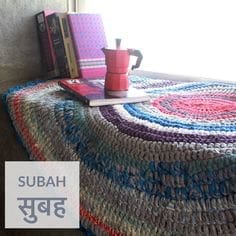
Chindi started as a fun project from Tanushri Shukla’s love for knitting. Along with a friend who loved to crochet, the duo started making small things and gifting them to friends. All the raw material was waste that was generated at Tanushri’s family-run wholesale garment manufacturing unit. There are tons of waste fabric that the tailors call ‘chindi’ that are generated every day and, currently, most of this leftover fabric is tossed into garbage.
The response Tanushri got to their tiny gifts was overwhelming and it organically grew into an organization. Chindi started working with women from Mankhud slum in Mumbai in 2015 and has developed itself into a design firm that handcrafts and upcycles knitted products. Tanushri also believes that the best-case scenario for Chindi would be that it becomes redundant and all organizations upcycle their own waste.
Goonj
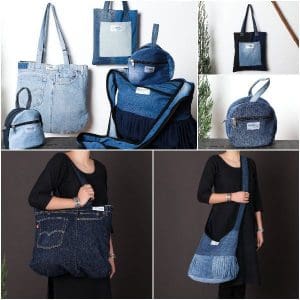
Goonj is a well-known non-governmental organisation based in Delhi. Founded in 1998 by Ashoka Fellow Anshu Gupta, the Goonj project collects unused clothing from all over India to reprocess the materials to provide clothes, sanitary and many other basic amenities to people living in poorer communities across the country. Goonj’s 300+ volunteers includes mass participation of housewives, professionals, students, corporates, who help in sending over 20,000kgs of recycled waste materials every month! A vast network of 100 grassroots agencies across India also help Goonj reach parts of 20 states of India.
Doodlage


If you thought upcycling would result in monotonous, shabby pieces, then you need to only look at Doodlage. With sustainability and innovation at its heart, Kriti Tula’s label boasts edgy patchwork jackets, delicate shrugs and exquisite shirts. Tula, who launched Doodlage in 2012, was first drawn to the idea of sustainability during her internship, where she came across large mounds of rejected fabric pieces; she took on the challenge of putting them to better use than to discard them. Over the years she has worked with a number of fabric manufacturers from all over India, using their leftover pieces to create something new and meaningful, thereby making Doodlage one of the most interesting sustainable fashion brands in India.
Other Brands

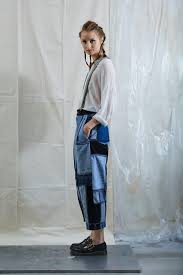
Redress Fade out label
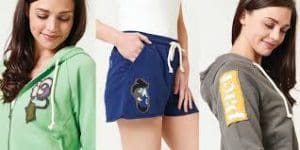
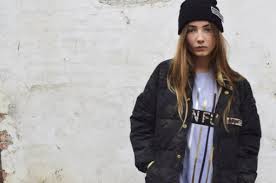
Zero waste daniel Magnafied
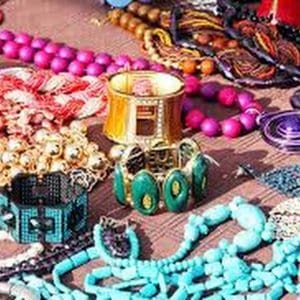
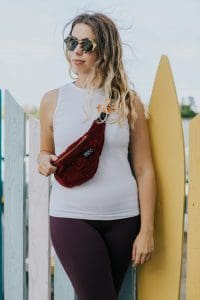
Black Hack Mahala

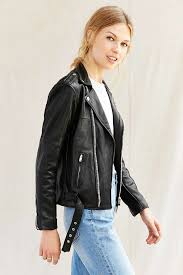

Reclaim to wear Pelechecoco Tonle
________________________________________________________________________

Article by Ms. Hetal Mistry
References :
https://www.fibre2fashion.com/industry-article/7279/recycling-and-upcycling-in-the-apparel-industry
https://goexplorer.org/fashion-from-pre-consumer-waste/
https://www.fashionrevolution.org/the-fabric-swap-repurposing-pre-consumer-waste/
https://www.kapokseed.com/the-queen-of-upcycling/
https://www.ecomall.com/greenshopping/upcyclingtextile.htm
https://www.forbes.com/sites/gregpetro/2019/02/08/upcycling-your-way-to-sustainability/#525b490e58e2
https://barbaraigongini.com/universe/blog/fashion-upcycling/
https://designforlongevity.com/articles/
https://www.forbes.com/sites/gregpetro/2019/02/08/upcycling-your-way-to-sustainability/#525b490e58e2
https://www.ecoideaz.com/showcase/upcycling-clothes-to-create-trendy-eco-friendly-fashion
https://www.ecoideaz.com/showcase/upcycling-clothes-to-create-trendy-eco-friendly-fashion
https://www.lawnstarter.com/blog/statistics/water-consumption-statistics/

